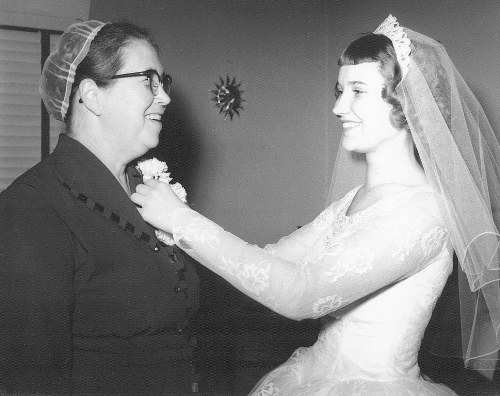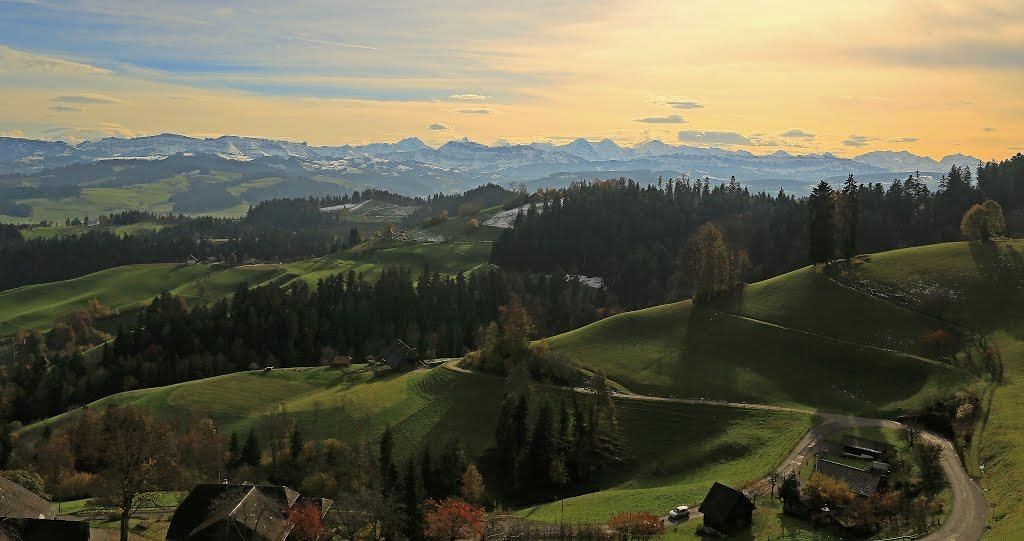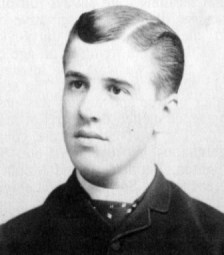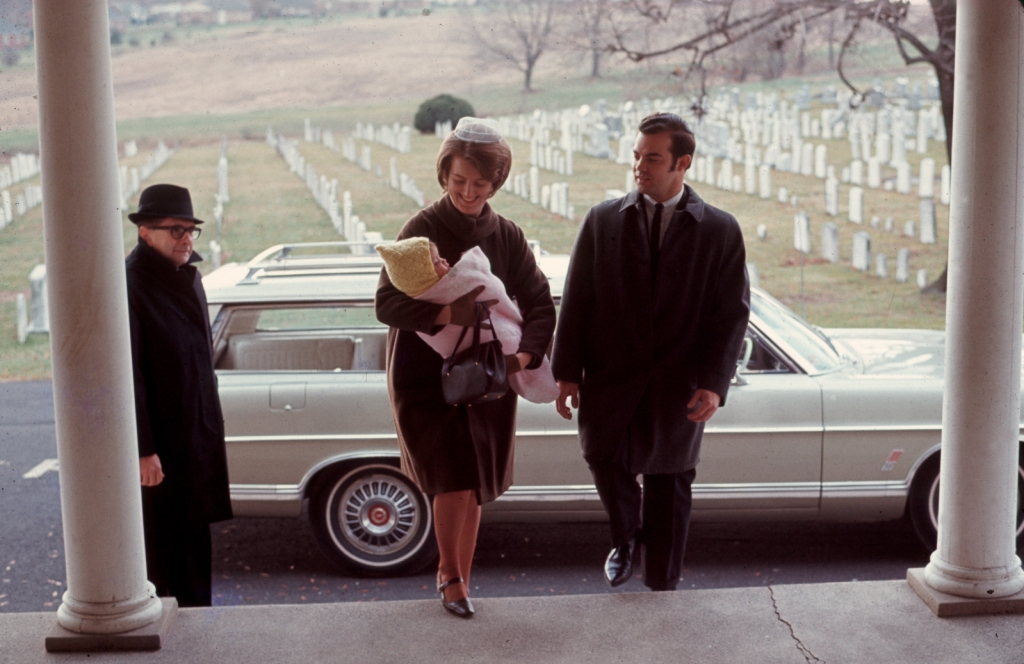Our Immigrant Heritage: Musselman
Written by Forrest Moyer on February 19, 2018

This series of posts highlights families descended from 18th-century Mennonite immigrants to eastern Pennsylvania, in connection with the MHC’s exhibit Opportunity & Conscience: Mennonite Immigration to Pennsylvania, on display through March 31, 2018. The stories reflect the enrichment brought to communities over centuries by the descendants of immigrants.
Immigrant brothers Jacob and Samuel
Most people with the surname Musselman in eastern Pennsylvania are descended from Jacob Musselman, an immigrant who settled in Milford Township, Bucks County circa 1730. His brother Samuel also came to Pennsylvania, and settled at Hatfield; but he had only daughters whose descendants did not carry the name Musselman. It’s possible that the wife of John Landis of Milford was also a sister of Jacob and Samuel Musselman (or Jacob’s wife was Anna Landis). John Landis called Jacob his brother-in-law in his will. Another immigrant, Hans (John) Musselman, arrived later (1753) and settled in Lehigh Township, Northampton County. Other Musselman and “Mosemann” immigrants settled in Lancaster County and points west.
The brothers Jacob and Samuel came from Zuzenhausen, Germany, southeast of Heidelberg. Their Anabaptist grandparents had migrated there from Lauperswil, Canton Bern, Switzerland. Close to Lauperswil is a smaller village called Moosegg, from which the family name Musselman/Mosemann originates. Medieval ancestors were referred to as “Ulrich im Moos ze Louperswile” and “Hans im Moose zu Lopperswil”.

View of the Alps from Moosegg, Bern.
Immigrant Jacob was an early minister in the Swamp Mennonite congregation. In 1735 the congregation built a log meetinghouse on present-day Brick Tavern Road (about halfway between the East and West Swamp churches), on land owned by speculator William Allen. In 1743, Jacob Musselman bought this land from Allen. Today a nice monument stands at the spot.
Jacob’s son Michael (d. 1808) was also a preacher at Swamp. In 1790 he purchased the land where the West Swamp Meetinghouse currently stands, on Allentown Road, and the original log meetinghouse was taken down and rebuilt at the new site. In 1819, it was replaced with a stone structure. A thorough set of records from this construction project are archived at the Mennonite Heritage Center.
Michael’s son Samuel (1759-1847) was also ordained preacher and later bishop. In 1839, he bought a German New Testament for use in the church. Years ago, it was donated to the MHC and was recently discovered in our collection. The book is in rough condition, missing its back cover and most of the spine, but it contains a nice two-page fraktur bookplate listing Jacob, Michael and Samuel Musselman as “predigers in der Schwammer Gemeinde [preachers in the Swamp congregation]”, followed by “Dieses Buch hat Samuel Musselman gekauft im Jahr unsers Herrn 1839, den 5ten Februar, Und gehoeret in das Neue Versammlungs-Haus. [This book was bought by Samuel Musselman in the year of our Lord 1839, the 5th of February, and belongs in the new meetinghouse.]” Below is a later inscription in German script: “Abrill den 3ten 1856 – das 4ten glid [the 4th generation] Michael S. Musselman, das 5ten glid Christian M. Musselman, das 6ten glied Henry A. Musselman.”

Mennonite Heritage Center Collection (2017.50.1)
So many Samuels!
In the 19th century, there were enough Samuel Musselman’s in the local area to make your head spin, and they were some of the more colorful family members.
Bishop Samuel Musselman (1759-1847) has been mentioned. His son, Samuel B. Musselman (1802-1874) was a prolific coverlet weaver, who eventually moved to Hilltown Township and is buried in the Line Lexington Mennonite Cemetery. The MHC collection includes six jacquard coverlets from his loom, all in shades of red. During peak years, Musselman wove more than one coverlet per week. It’s likely he had apprentice help.


Coverlet made at Milford for Maria Weirman in 1846, No. 592. Mennonite Heritage Center Collection (1987.21.1)
Samuel B. had a cousin, Samuel C. Musselman (1797-1867), who was a schoolteacher and fraktur artist. Numerous pieces of fraktur are attributed to him, including a practice book dated 1816 that contains at least 12 drawings/decorated pages. This book was photographed years ago by historian J. J. Stoudt, but it’s location today is unkown. If you find it, let us know!

Photos from the Mary Jane Lederach Hershey Fraktur Research Collection, Mennonite Heritage Center (Hist. Mss. 407)

Samuel’s brother John C. Musselman (1791-1837) was also a schoolteacher, though no fraktur has yet been attributed to him. In addition, was a marble cutter. He and Samuel married sisters, Anna and Susanna, daughters of preacher Samuel Moyer of Saucon Mennonite Church.
John’s son Samuel M. Musselman (1819-1899), like his father, was a gravestone carver. He may have also been a teacher and made some fraktur. For instance, this bookplate for his niece Eliza could be his work. Bold and simple, with no color, it bears similarity to the bookplate pictured above for his great-uncle Samuel Musselman at Swamp, made ten years earlier.

Mennonite Heritage Center Collection; gift of Mary Jane Lederach Hershey & Hiram Hershey (2008.22.5)
This Samuel is best known locally as the compiler of a tunebook, Die Neue Choral Harmonie, a harmony singing book published from Lower Salford Township, Montgomery County in 1844. The book contains tunes composed or arranged by Musselman with local names — “Franconia”, “Hilltown”, “Milford”, “Springfield” and “Alpper [Upper] Saucon”. Samuel later moved to Carroll County, Illinois, where he was ordained a minister and elder in the Church of the Brethren. He died in Gage County, Nebraska in 1899.

Now things get complicated. There were three Rev. Samuel Musselman’s who shared exactly the same name — Samuel Moyer Musselman. Samuel above, the tunebook compiler and Brethren preacher, was a double first cousin of Samuel M. Musselman (1835-1902), of near Coopersburg, an Evangelical Mennonite preacher (their fathers married sisters); the third, Rev. S. M. Musselman of Philadelphia and Kansas (1875-1938), was a General Conference Mennonite preacher and was a second-cousin once removed to the other two.
S. M. of Coopersburg was a preacher of the Evangelical Mennonite Society from 1866 to 1888. In 1888, his authority to preach was revoked on the basis of a “well-founded complaint”. This statement was repeated the following year. We can only guess what the issue was, but it could have had to do with Musselman’s activity as a Braucher (powwow doctor who practiced traditional/medieval faith healing). An interesting thing is that “Old” Mennonite minister Jacob Mensch of Skippack wrote to Musselman for remote-healing help in 1895. His papers at the MHC (Hist. Mss. 8) contain letters from Musselman about the brauching process. They have been translated and published in the book Powwowing among the Pennsylvania Dutch by David W. Kriebel, pp. 107-109. S. M. Musselman died at Quakertown in 1902 while waiting for a trolley.

The MHC holds a small bookplate for Samuel M. Musselman of Coopersburg. He was a son of Samuel, the fraktur artist, and this plate is in his father’s style, but more crude. Samuel Musselman’s fraktur practice book of 1816 also contains some powwow/healing recipes and a list of unlucky birthdays. Gift of Isaac Clarence Kulp (2006.4.215)
Another Samuel shared exactly the same life span as S. M. of Coopersburg — a third cousin, Samuel H. Musselman (1835-1902) of nearby Upper Milford.
Bible Fellowship roots
The Upper Milford branch of the family is descended from Jacob Musselman (1730-1784), son of immigrant Jacob, who moved to Allen Township, Northampton County. His son Christian moved back to Upper Milford, where most of his children and grandchildren eventually joined the Evangelical Mennonite (now Bible Fellowship) Church. Granddaughter Anna (1830-1904) was wife of William S. Gehman, the main leader of the new fellowship. The house where the church was organized was that of her uncle, David Musselman. After William Gehman himself, the three most influential leaders for decades were his son W. G. Gehman and cousins-once-removed, William B. and Harvey B. Musselman, grandsons of David Musselman.
For the first 80 years of its existence, the Bible Fellowship Church was guided largely by the Musselman-Gehman family. As BFC historian Harold Shelly puts it: “Before 1945 no one held the office of presiding elder or chairman of Annual Conference who was not in this extended family. The names of Musselman and Gehman were synonymous with the leadership of the Conference. Following the leaders were loyal preachers and loyal congregations.” (The Bible Fellowship Church, 213)



Musselman descendants who shaped the early Bible Fellowship Church: (left to right) William B. Musselman (1860-1938), Harvey B. Musselman (1868-1956), and William G. Gehman (1874-1941).
Vernfield Musselman’s
In Montgomery County, one family of Musselman’s were attracted to the Church of the Brethren, another incarnation of the Anabaptist faith of their Swiss ancestors.
Henry M. Musselman (1865-1944) for some years operated a general store at Vernfield, in the first floor of the Nyce building at Sumneytown Pike and Morwood Road. Henry and wife Lizzie were members of Salford Mennonite Church, where his uncle Jacob Moyer was preacher, but most of their children married young people of Brethren families who lived around Vernfield. Sallie married William Delp (later a minister at Hatfield Church of the Brethren), Martha married William Price, Lizzie married Perry Koffel, Melvin married Bessie Price, and Raymond married Esther Stauffer. Only two married Mennonites — Emma married William Hoffman, and Henry married Katie Bean.
From this family come two local photos of the 20th century, showing the interrelatedness, subtle differences, and confluent wave of change that by 2018 has wiped away nearly all differences between mainstream Mennonites, Brethren and other churches (other than method of baptism).
In the first photo, circa 1958, Ruth Musselman (about to be Cunningham) pins a corsage on the dress of her mother, Esther Stauffer Musselman. Esther is wearing a traditional head covering (in a slightly different style than the coverings worn by Mennonites), but her dress is more modern than the cape dress her Brethren mother would have worn. Daughter Ruth has chosen to wear a fashionable wedding dress with a veil, rather than a plain dress and head covering. The Brethren were earlier to adopt uniform plain clothing in the late 19th century, and they allowed it to pass earlier than Mennonites as well.

Mennonite Heritage Center Collection; gift of Ruth Musselman Cunningham.
The second photo shows Roy and Annie Meyers Musselman arriving at Salford Mennonite Church with their first child, Michelle, in 1968. By the late 1960s, dress standards in the Mennonite community had loosened enough that Roy and Annie could dress stylishly, though her head covering is still firmly in place. Jacob A. Alderfer, nearing senior years, looks on from the side, and generations of old Salford Mennonites bear witness from peaceful graves in the background.

Photo courtesy of John Ruth.
Sources on the Musselman family
Amsler, Cory M. “Samuel Musselman” in Bucks County Fraktur, Doylestown: Bucks County Historical Society, 2001, pp. 277-278. See also Mary Jane Lederach Hershey Fraktur Research Collection (Hist. Mss. 407) at the MHC.
Buck, Leonard E., ed. “…What Mean These Stones?” Coopersburg, PA: Bible Fellowship Church Historical Committee. 1983. See also papers of the BFC Historical Committee, available in the MHC library and some at the BFC Online History Center.
Musselman, Bruce P. Old Vernfield Remembered. Telford, PA: Self-published. 1997.
Musselman, Jim. “A Brief, General History of the Mosimann Family”. Unpublished. 2015. Available in the MHC library. Deals mostly with DNA research. The MHC also holds a spreadsheet of Musselman descendants created by Jim.
Shelly, Harold P. The Bible Fellowship Church, formerly Mennonite Brethren in Christ, Pennsylvania Conference, originally die Evangelische Mennoniten Gemeinschaft von Ost-Pennsylvanien. Bethelehem, PA: Bible Fellowship Church Historical Committee, 1992.
Walter, Ronald E. “Samuel B. Musselman: Coverlet Weaver 1837-1847 in Milford Township and 1847-1860 in Hilltown Township, Bucks County, PA”. Unpublished. 2005, with a list of known coverlets added 2007. Available in the MHC library.
Wenger, John C. “Musselman (Musselmann, Moselmann) family.” Global Anabaptist Mennonite Encyclopedia Online. 1957. Web. 15 Feb 2018. http://gameo.org/index.php?title=Musselman_(Musselmann,_Moselmann)_family
